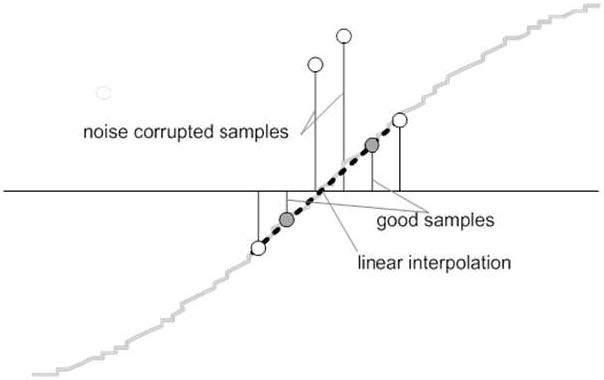SBOA444 November 2020 TMCS1100
4.3.1.3 Frequency Measurement and Cycle Tracking
The instantaneous voltage, currents, active powers, and reactive powers are accumulated in 64-bit registers. A cycle tracking counter keeps track of the number of cycles accumulated. When CYCLES_PER_COMPUTATION number of cycles have been accumulated, the background process stores these accumulation registers and notifies the foreground process to produce the average results, such as RMS and power values.
For frequency measurements, a straight line interpolation is used between the zero crossing voltage samples. The Frequency Measurement figure the samples near a zero cross and the process of linear interpolation.
 Figure 4-7 Frequency Measurement.
Figure 4-7 Frequency Measurement.
The resultant cycle-to-cycle timing goes through a weak low-pass filter to further smooth out any cycle-to-cycle variations. This filtering results in a stable and accurate frequency measurement that is tolerant of noise.